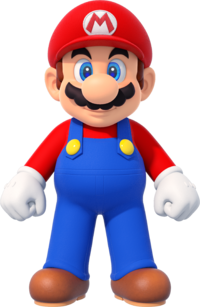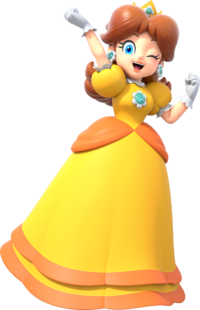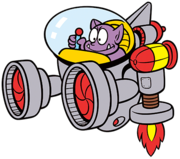April 13, 2019
By Ryan Porzl
 |
| Super Mario Land Cover |
By the end of the 80s, the Mario franchise went from humble beginnings with Mario as the hero of Donkey Kong to an Arcade in Mario Bros to exploding in popularity with Super Mario Bros on the Nintendo Entertainment System and becoming one of the top franchise players in the video games business. Before Mario, Nintendo had created a portable game called the "Game n' Watch" which was a watch that played a simple game which proved very successful. By the end of the 80s, Nintendo decided to create a new portable system that played games on little cartridges and was charged with four AA Batteries. The portable system would be known as the Game Boy and would become one of Nintendo's most successful creations. To no surprise, Nintendo decided on creating a Mario game to go along with the Game Boy and released a new and different Mario adventure called Super Mario Land. Here, we'll take a look at Super Mario Land as the 30th Anniversary is approaching.
Characters:
 Mario- The hero of the game. The more things change the more they stay the same as the plumber is in the familiar role of saving a princess and her kingdom but it's a new kingdom, princess, and villain. Mario must now rescue Princess Daisy and free Sarasa Land from the alien invader Tatanga. He does get the usual help in mushrooms, flowers, and stars along the way while actually piloting vehicles during his quest.
Mario- The hero of the game. The more things change the more they stay the same as the plumber is in the familiar role of saving a princess and her kingdom but it's a new kingdom, princess, and villain. Mario must now rescue Princess Daisy and free Sarasa Land from the alien invader Tatanga. He does get the usual help in mushrooms, flowers, and stars along the way while actually piloting vehicles during his quest. Princess Daisy- The princess of Sarasa Land who is kidnapped by Tatanga who wants her for a queen. Daisy is in the Princess Toadstool/Peach role of damsel that Mario must rescue.
Princess Daisy- The princess of Sarasa Land who is kidnapped by Tatanga who wants her for a queen. Daisy is in the Princess Toadstool/Peach role of damsel that Mario must rescue. Tatanga- The main villain. An alien from an unknown world in space, Tatanga invades Sarada Land and conquers it by hypnotizing it's inhabitants while kidnapping Princess Daisy hoping to make her his queen. Mario's mission is to save Daisy and Sarasa Land from Tatanga. Tatanga is a purple alien who rides in a space ship called "Pagosu" which shoots a big ball that scatters to three smaller ones.
Tatanga- The main villain. An alien from an unknown world in space, Tatanga invades Sarada Land and conquers it by hypnotizing it's inhabitants while kidnapping Princess Daisy hoping to make her his queen. Mario's mission is to save Daisy and Sarasa Land from Tatanga. Tatanga is a purple alien who rides in a space ship called "Pagosu" which shoots a big ball that scatters to three smaller ones. King Totomesu- The boss of the first world (Birabuto Kingdom), King Totomesu is a sphinx capable of shooting fire. He fights like King Bowser in Super Mario Bros. shooting fire on a bridge with Mario either defeating him with a flower power or getting across the bridge and hitting a switch.
King Totomesu- The boss of the first world (Birabuto Kingdom), King Totomesu is a sphinx capable of shooting fire. He fights like King Bowser in Super Mario Bros. shooting fire on a bridge with Mario either defeating him with a flower power or getting across the bridge and hitting a switch. Dragonzamasu- The boss of the second world (Musa Kingdom). Dragonzamasu is a seahorse that shoots fire at Mario. The fight takes place underwater so Mario pilots a submarine called the Marine Pop. He's also guarded by Tamao. Mario can either defeat him with the Marine Pop's torpedoes or going underneath, blowing away rocks, and getting to a switch.
Dragonzamasu- The boss of the second world (Musa Kingdom). Dragonzamasu is a seahorse that shoots fire at Mario. The fight takes place underwater so Mario pilots a submarine called the Marine Pop. He's also guarded by Tamao. Mario can either defeat him with the Marine Pop's torpedoes or going underneath, blowing away rocks, and getting to a switch. Tamao- An eyeball like creature who guards Dragonzamasu during his battle with Mario by moving around the screen blocking the marine pop's torpedoes. He can hurt Mario by touching him.
Tamao- An eyeball like creature who guards Dragonzamasu during his battle with Mario by moving around the screen blocking the marine pop's torpedoes. He can hurt Mario by touching him. Hiyoihoi- The boss of the third world (Easton Kingdom). Hiyoihoi is an Easter Island head with legs and arms. Hiyoihoi's weapon are boulders he tosses at Mario. Like King Totomesu, Mario can either beat him with flower power and jump over him to touch a switch.
Hiyoihoi- The boss of the third world (Easton Kingdom). Hiyoihoi is an Easter Island head with legs and arms. Hiyoihoi's weapon are boulders he tosses at Mario. Like King Totomesu, Mario can either beat him with flower power and jump over him to touch a switch. Biokinten- One of the bosses of the fourth world (Chai Kingdom). Biokinten is a creature who hides behind a cloud and never shows himself. Mario fights him in an airplane called the Sky Pop. Biokinten's main weapon is throwing chicken type enemies at Mario. Like Tatanga, who Mario fights immediately afterward, Mario must beat him as there isn't a switch. To defeat him, Mario shoots missiles from the Sky Pop.
Biokinten- One of the bosses of the fourth world (Chai Kingdom). Biokinten is a creature who hides behind a cloud and never shows himself. Mario fights him in an airplane called the Sky Pop. Biokinten's main weapon is throwing chicken type enemies at Mario. Like Tatanga, who Mario fights immediately afterward, Mario must beat him as there isn't a switch. To defeat him, Mario shoots missiles from the Sky Pop.Gameplay:
Super Mario Land mostly played liked Super Mario Bros. The game played like a platform side scroller with Mario starting in the beginning and having to get to the end of the level before time ran out while fighting through enemies and pits, holes, or other obstacles. Mario can also get a mushroom to grow bigger, a flower to shoot super balls, and stars which grant brief periods of invincibility. Mario can also collect coins throughout the level or by smashing certain blocks. Getting 100 gives an extra life. The game has four worlds which are Birabuto Kingdom, Muda Kingdom, Easton Kingdom, and Chai Kingdom. Like Super Mario Bros., each world has at least three stages with the third featuring a boss battle. After beating the boss, Mario will find that Daisy is not in this castle and must continue onward and upward. Another similarity is for the first three bosses, Mario can either fight them or try to get pass them to get to a switch just like how Mario can reach an ax to cut the bridges in Super Mario Bros. The game also has certain pipes Mario can go in which takes him to caves containing coins.
However, the game also has several differences. Unlike other Mario games where a flower gives the power to shoot fireballs, this game offers super balls that bounce around and can collect coins. The end of most stages doesn't see Mario finish by jumping on a flag pole but going through one of two doors. The lowest and easiest one takes Mario to the next stage while the higher and harder to reach door takes Mario to a bonus game before advancing to the next stage. The bonus game sees four floors with one having a 1UP or extra life, one having a 2UP or two extra lives, one having a 3UP or three extra lives, and one contains a flower. The game sees Mario and a ladder move fast and the player has to press a button to stop them. Mario will then grab the item in the same floor he's in or climb a ladder to a floor beneath or above him to collect that floor's item. One of the most notable differences is that the game has some similarities to Mario Bros. and the American Super Mario Bros. 2 in that it doesn't take place in the Mushroom Kingdom, Mario doesn't save Princess Peach, and King Bowser is not the main enemy. Super Mario Land also marks the first Mario game in which his brother Luigi is not playable. Perhaps the the difference most people know of is the fact that it's the first Mario game he pilots vehicles. In Super Mario Land, Mario uses a submarine in world two stage three (2-3) called the Marine Pop which is capable of firing torpedoes and an airplane in world four stage three (4-3) called the Sky Pop which shoots missiles. These two stages have a different format as they're scrolling shooters similar to the classic game Gradius.
Behind the Scenes:
Super Mario Land was created at the request of Nintendo CEO Hiroshi Yamauchi. With Nintendo planning to release the Game Boy, Yamauchi wanted a Mario game as his belief was fun games sold consoles and wanted a fun game with their mascot. For Super Mario Land, Nintendo had Nintendo Research & Development 1 or Nintendo R&D1 which was their oldest video game development team and had previously worked on Donkey Kong, Super Mario Bros., and Metroid to work on the game. Heading the development was longtime Nintendo employee and video game legend Gunpei Yokoi. Yokoi was a pioneer in video games having created both the Game & Watch as well as the Game Boy, was the creator of the cross directional D-pad for controllers and the co-creator and producer for the Metroid and Kid Icarus franchises. Perhaps his biggest contribution was serving as the mentor of fellow video game legend Shigeru Miyamoto while helping him work on the first Donkey Kong in 1981 which, ironically, was the debut of Mario (then Mr. Video and Jumpman). Speaking of Miyamoto, he actually had no involvement with Super Mario Land. Another notable person working on the game was Satoru Okada who served as director for the game. Okada previously worked with Yokoi on the Metroid and Kid Icarus games as well as designing the Game Boy with Yokoi being responsible for the industrial design while Okada was responsible for the engineering. Okada would also later work on other handheld consoles including the Game Boy Color, the Game Boy Advance, the Game Boy Advance SP, and the Nintendo DS. The development team used both new and inconsistent elements for the game including shrunk elements of the series in order to fit it in the portable device's small screen. Super Mario Land was composed by Hirokazu Tanaka who previously composed Metroid and Kid Icarus while later composing Tetris, Mother, Dr. Mario, and Earthbound. Originally, Super Mario Land debuted as being bundled with the debuting Game Boy which was the original intention. However, things changed months later when Dutch video game designer and entrepreneur Henk Rogers brought the classic puzzle game Tetris to Nintendo's attention and convinced Minoru Arakawa, the founder and then president of Nintendo of America, that Tetris would attract a larger audience. As a result, Tetris would eventually replace Super Mario Land as the bundled game for the Game Boy.
Release:
Super Mario Land was released on the Game Boy on April 21, 1989 in Japan; August 1, 1989 in North America; September 28, 1990 in Europe. The game also debuted the same day as the Game Boy. Upon release, the game received critical acclaim with CVG scored it 93%, EGM scored it a 31/40, Mean Machines scored it 90%, The Game Machine scored it 94%, and Player One scored it 98%. The game also sold 18 million copies, more than Super Mario Bros. 3. Critics saw it as a smaller and shorter version of Super Mario Bros. CVG said it was like having an arcade in your pocket and graphics being remarkable for it's size. EGM considered it fantastic and very fun to play. Mean Machine and Superplay praised it's playability. Eurogamer considered the soundtrack to be one of the greatest while Player One and Complex also praised it. Player One considered Super Mario Land a masterpiece and the pinnacle of portable video gaming. However, criticism among many was in regards to the game's length being too short with Eurogamers saying it could be beat in less than an hour.
The later re-release on the 3DS wasn't as praised but still got solid ratings with Eurogamer scoring it a 7/10 while IGN scored it a 7.5/10 with IGN's Lucas Thomas worrying of potential eyestrain due to the game being shorter in size but fellow IGN Levi Buchanan thought it made no compromises in it's size reduction.
Aftermath:
Super Mario Land proved successful to the point where it launched a sequel Super Mario Land 2: 6 Golden Coins in 1992 which introduced Wario. A third Land game called Warioland: Super Mario Land 3 was released in 1994 while the Land title was revived in 2011's Super Mario 3D Land for the Nintendo 3DS in 2011 though it can be argued that the latter two aren't sequels. The characters of Princess Daisy and Tatanga would also later be used in future games. Daisy would appear in 1991's NES Open Golf Tournament as Luigi's caddy before appearing in the ill-fated 1993 Super Mario Bros. film played by Samantha Mathis. She returned to games with 2000's Mario Tennis and has been a regular in Mario games since, mostly in the Mario sports game, Mario Party games, and Mario Kart games. She's also appeared in trophy form and an alternate skin for Princess Peach in the Super Smash Bros. games. Overall, she's appeared in 73 games as of 2018 both as a playable and nonplayable character. Tatanga returned in Super Mario Land 2: 6 Golden Coins but as a regular boss, having been replaced by Wario in the antagonist role. Here, he's the boss of Space Land and holds one of the 6 Golden Coins needed to access Mario's castle. Tatanga later appeared in comics and Japanese mangas but wouldn't appear in another game until appearing as a usable spirit in 2018's Super Smash Bros. Ultimate though he has been mentioned in Princess Daisy's trophies and bios in other games. Super Mario Land also was the first Mario game released on Game Boy and led to many other Mario titles and series including more Super Mario Land games as well as Warioland and Mario & Luigi series. Super Mario Land would eventually be re-released on the Nintendo 3DS Virtual Console in 2011 as a launch title while featuring some tweaks to the presentation.
No comments:
Post a Comment